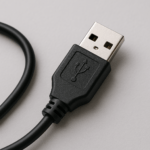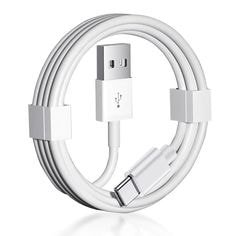
How to Find the Right USB Cable? A Comprehensive Guide
2025-04-10
The Importance of USB Cable Quality in Device Performance
2025-04-15A Retailer’s Guide to USB Cable Certifications: What Matters for Safety?
Imagine this: A customer returns a melted USB cable, demanding a refund. Then, a week later, you receive a cease-and-desist letter for selling non-compliant electronics. Suddenly, your reputation—and profits—are on the line. This isn’t a hypothetical nightmare. In 2024, the U.S. Consumer Product Safety Commission (CPSC) flagged over 40,000 unsafe charging accessories in just six months, many from retailers who overlooked one critical detail: certifications.
For retailers, USB cables are more than just inventory. They’re lifelines for modern devices, but they’re also potential liabilities. With global crackdowns on counterfeit electronics and consumers increasingly wary of sketchy tech, stocking certified cables isn’t just good practice—it’s survival.

Our guide isn’t about ticking regulatory boxes. It’s about arming you with the knowledge to dodge fines, build trust, and future-proof your supply chain. We’ll decode the alphabet soup of CE marks, FCC compliance, and USB-IF logos, revealing why these stamps matter more than ever in a market flooded with cut-rate, dangerous knockoffs. Let’s turn certifications from a headache into your strongest selling point.
Why USB Cable Certifications Matter More Than Ever
In 2023, the U.S. Consumer Product Safety Commission (CPSC) reported a 34% spike in incidents involving faulty charging cables, including fires and device damage. For retailers, the stakes are high: a single recall can cost thousands in lost revenue, not to mention reputational harm.
Certifications act as a safety net. They signal that a product meets rigorous testing standards for electrical safety, durability, and environmental impact. But not all certifications are created equal. Let’s break down the ones that should be on your radar.
CE Certification: Europe’s Gatekeeper
The CE mark (Conformité Européenne) indicates compliance with EU health, safety, and environmental standards. For USB cables, this covers directives like the Low Voltage Directive (LVD) and Electromagnetic Compatibility (EMC) Directive.
Why Retailers Should Care
- Legal Requirement: CE marking is mandatory for selling electronics in the EU.
- Safety Assurance: Ensures cables won’t overheat, short-circuit, or emit harmful interference.
- Market Access: No CE mark? Your shipment could be seized at customs.
The Fine Print CE certification relies on self-declaration by manufacturers, which has led to abuse. A 2022 EU investigation found that 23% of CE-marked USB cables failed basic safety tests. Always ask suppliers for independent test reports from accredited labs like TÜV or Intertek.
FCC Compliance: Navigating U.S. Regulations
The Federal Communications Commission (FCC) ensures electronic devices don’t interfere with wireless communications. For USB cables, they focus on electromagnetic emissions.
Why Retailers Should Care
- Mandatory for U.S. Sales: Non-compliant cables can lead to fines up to $150,000 per violation.
- Avoid Interference: Poorly shielded cables can disrupt Wi-Fi, Bluetooth, or even medical devices.
Real-World Impact In 2021, a hospital in Texas traced repeated ECG monitor failures to uncertified USB cables used in nearby equipment. The culprit? Cheap, unshielded wires emitting excessive electromagnetic noise.
USB-IF Certification: The Gold Standard
The USB Implementers Forum (USB-IF) certifies that cables meet technical specs for performance (e.g., USB 3.2, USB4). Look for the “Certified USB” logo.
Why Retailers Should Care
- Performance Guarantee: Certified cables deliver promised speeds (e.g., 40Gbps for USB4).
- Compatibility: Reduces returns from customers complaining, “This cable doesn’t work with my device.”
The Hidden Benefit USB-IF certification requires annual factory audits, minimizing the risk of counterfeit products. A 2023 study by ChargerLab found that 89% of non-certified USB-C cables failed to meet advertised specs.
RoHS Compliance: Going Green Matters
The Restriction of Hazardous Substances (RoHS) directive bans lead, mercury, and other toxins in electronics.
Why Retailers Should Care
- Legal Compliance: Required in the EU, California, and increasingly globally.
- Consumer Demand: 68% of buyers prefer eco-friendly electronics, per a 2023 Nielsen report.
Case in Point A major UK retailer faced a £500,000 fine in 2022 for selling non-RoHS-compliant cables containing cadmium. The kicker? Their supplier had provided forged documentation.
UL Certification: Beyond the Basics
Underwriters Laboratories (UL) tests products for fire and electrical safety. While not mandatory, UL certification is a hallmark of quality.
Why Retailers Should Care
- Insurance Requirements: Some insurers demand UL-certified electronics for business coverage.
- Durability: UL tests include extreme bending (5,000+ cycles) and tension resistance.
The Cost of Cutting Corners In 2020, a discount store chain recalled 200,000 USB cables after UL found they posed a fire risk. The supplier had skipped UL testing to cut costs by $0.15 per unit.
How to Verify Certifications: A Step-by-Step Checklist
Step 1: Obtain Official Documentation
- Always request third-party test reports from ISO 17025-accredited labs
- Verify report dates (must be within last 12 months)
- Check for specific model numbers and technical specifications
Step 2: Database Verification
- USB-IF: Search certified products at usb.org
- FCC: Validate IDs via fcc.gov/oet/ea/fccid
- CE: Confirm through EU’s NANDO database
- Cross-reference multiple sources for authenticity
Step 3: Physical Product Testing
- Conduct voltage drop tests (use USB power meters)
- Check for proper shielding (EMI/RFI protection)
- Perform durability tests (bend, pull, and connector tests)
- Verify cable markings match documentation
Step 4: Supplier Verification
- Request factory audit reports
- Confirm production facility details
- Check for consistent certification across product lines
- Validate supplier’s track record with other retailers
Step 5: Compliance Documentation
- Maintain organized records of all certificates
- Keep supplier compliance agreements on file
- Document all verification steps taken
- Establish periodic re-verification schedule
Key Tools for Verification:
- USB power meters (50−50−200)
- EMI testers (basic models start at $300)
- Certification database access (free)
- Sample testing budget (3-5% of order quantity)
The Bottom Line for Retailers
Stocking certified USB cables isn’t just about avoiding fines—it’s about protecting your business and customers. Certified products reduce returns, build brand loyalty, and keep your shelves compliant. In an era where a single TikTok video about a melted charger can go viral, cutting corners isn’t worth the risk.
Závěr
USB cable certifications aren’t bureaucratic red tape—they’re your first line of defense against liability, recalls, and unhappy customers. By prioritizing CE, FCC, USB-IF, RoHS, and UL certifications, you’re not just selling cables. You’re selling peace of mind.
Stay sharp, verify rigorously, and remember: in the world of electronics, trust is built one certified cable at a time.
FAQs
1. Do all USB cables need FCC compliance?
Yes, if sold in the U.S. All electronic devices (including cables) must comply with FCC emission standards.
2. Can a cable have CE and UL marks?
Absolutely. CE is for EU compliance; UL is a voluntary safety certification. Many quality cables have both.
3. How often do certifications expire?
CE and FCC don’t expire, but USB-IF requires annual renewals. Always request updated documentation.
4. Are uncertified cables cheaper?
Initially, yes. But recalls, returns, and reputational damage cost far more long-term.
5. Can I trust a supplier’s “self-certified” CE mark?
Verify with third-party test reports. Self-declaration is prone to fraud.







